Store Opening Guide
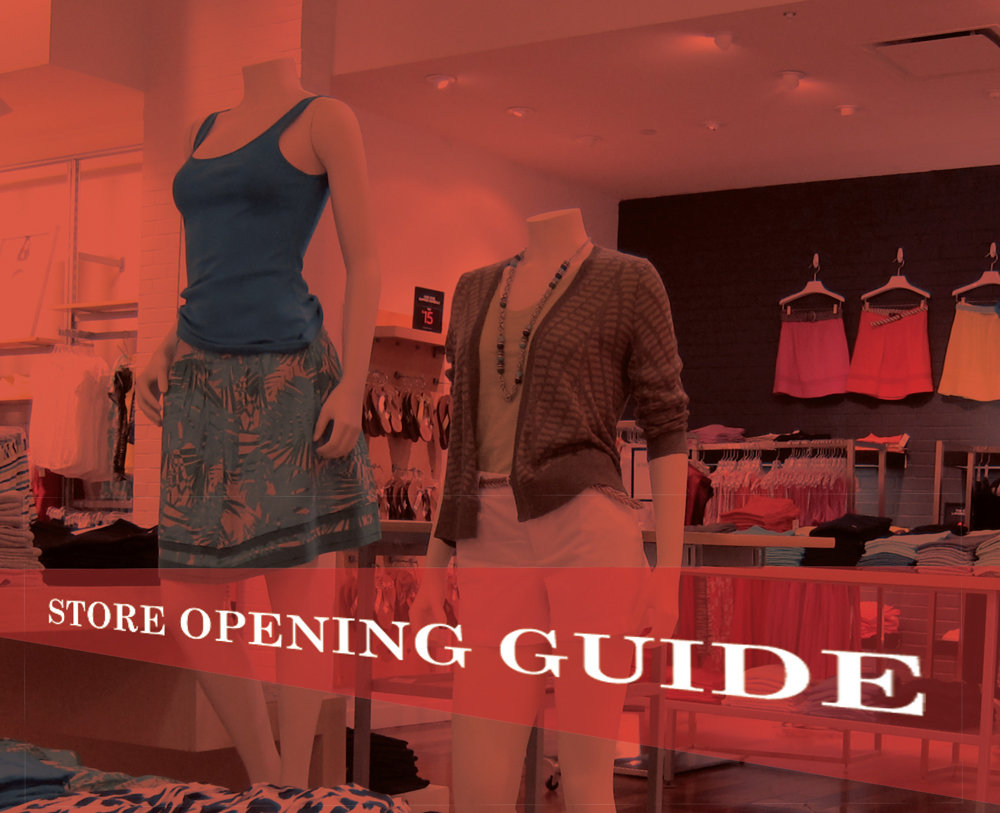
Maximize Your Store's Potential with Our Opening Guide
Store Supply Warehouse knows how challenging starting a small business can be. When we started way back in 1994 we had to figure out a lot of things too. But one thing we knew for sure: To be successful in business we would have to take care of the customer every time, without hesitation. That’s exactly what we strive for today and that’s why we’ve put together this New Store Opening Guide as a resource for all the aspiring entrepreneurs out there. Navigating the waters of setting up a store can be time consuming and complicated. This guide will give you insights, checklists, recommendations and tips that we’ve gathered from partnering with thousands of small retailers just like yourself for the past 20 years.

We’re here to serve you! Store Supply Warehouse is designed around helping you make your business successful. We not only bring you retail supplies and fixtures to enhance the look and functionality of your store, we are also a resource for helping you build the store of your dreams. We want to work with you to understand your goals and objectives and connect you with products and services that lead to success.


As you embark on this new journey we hope to earn your business. Here are just a few things you can expect when you partner with Store Supply Warehouse:
- Satisfaction Guaranteed – if you are not completely satisfied, neither are we, get in touch with us and we will make it right.
- Low Price Guarantee – we won’t be beat! If you see a lower advertised price let us know!
- Top-Notch Customer Service – all calls are answered by a real living person, true story.
- No Hassle Return Policy – If it’s not working for you, send it back, no questions asked.
- Fast Shipping – Order by 3pm your local time and it ships the same day - we reach 88.8% of the U.S. population in one day!
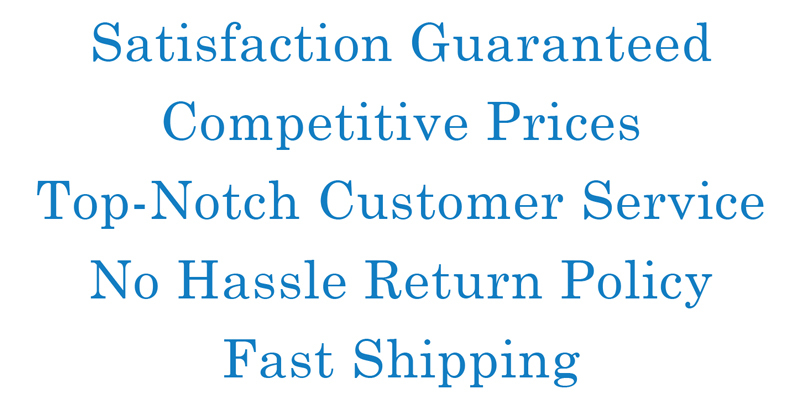

By Phone - 1-800-823-8887
On the Web - Check out our fully searchable online catalog or browse all of our categories at storesupply.com
Chat - Chat live M-F 9am-5pm CT
Social - Connect with us on social media

Congratulations on your decision to start your own retail business! Although starting a retail store may seem overwhelming, careful planning and research will put you on the path to success. Our free new Store Opening Guide will provide advice on what steps to take and what points to consider as you make plans to open your new store. Setting up your own retail store will require a lot of hard work, but it can be a very exciting and rewarding way to earn a living.
|
1. Choose a Business
Legal Structure
|
|
2. Apply for an Employer Identification Number
|
|
One of the most important decisions a new business owner will make is choosing what type of legal structure is right for them. While there are many options from sole proprietorships to C Corporations, choosing the right legal structure from the outset is important. Although you can change your business structure at a later date, doing so may be both time consuming and expensive.
|
|
An EIN (Employer Identification Number) is a permanent number that can be used for most of your business needs, including: opening a bank account, applying for business licenses, and filing a tax return by mail. New business owners can apply for an EIN by phone, fax, mail, or online. Advanced planning is needed when applying for an EIN, because it will take up to two weeks for your EIN to become registered with the IRS. To learn more about setting up an EIN for your business, visit www.IRS.gov.
|
|
|
|
|
|
3. Understand the Law
|
|
4. Write a Business Plan
|
|
Before your start your own retail business it is important to understand which licenses or permits are required by local or state government offices. Consulting with your accountant or attorney could be helpful in determining if there are any laws that govern your type
of retail business. |
|
One of the first steps in creating your business plan is to determine what type of retail store you plan to open. That decision will directly affect what you decide to name your store. Another important aspect of building your business plan to is to perform research. The Internet is an excellent source for statistics on the retail industry including data on local or regional demographics, competitors, or industry trends. To learn more about making your own business plan, we recommend visiting the Small Business Administration website.
|
|
|
|
|
|
5. Select a Location
|
|
6. Store Operations & Policies
|
|
In real estate, the most popular phrase is “location, location, location.” The same can be true for the retail industry. Where you locate your retail business could be the deciding factor on whether your business succeeds or fails.
|
|
The creation of a store operations and policies manual is a critical component of the planning process. The ability to anticipate situations before your retail business opens will help you and your staff to not only handle day to day operations, but also provide insight on how to deal with unique situations. Remember, it is important that each employee not only be given a copy of your store operations manual, but also receive training on your policies.
|
|
|
|
|
|
7. Find Suppliers
|
|
|
|
Once you have finalized the type of retail store you will operate and where it will be located, your focus can turn to finding the right suppliers. As a new retail business, you will need to locate a supplier for basic necessities such as store fixtures, displays, and supplies to help facilitate your daily operations. The success of your retail business also depends on offering the right products at attractive price points. Finding reliable sources for wholesale merchandise is a key to long term profitability.
|
|
|

Selecting the ideal location for your new retail store is vital to the long term success of your business. Before you choose a location, store owners should define the profile of their target customer, determine the products you plan to sell, and estimate how much space you will need. Your ability to do comprehensive research is key to making the right decision. Just because a location has high traffic and good visibility does not mean that those factors will translate to customers through your door. Make sure you analyze whether or not the traffic matches the profile of your target customer. For small retailers, locating your store near a popular anchor store could benefit your business.


|
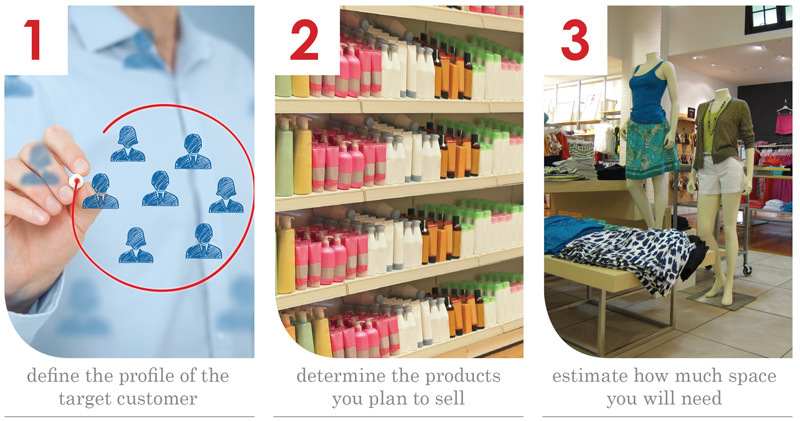

A lease is a legally enforceable contract between the landlord (lessor) and a tenant (lessee) in which the tenant agrees to pay to a landlord a monthly rental fee to take possession of a property for a certain period of time. The most common type of lease in the retail industry is known as a triple-net lease. Under a triple-net lease, the tenant not only makes a fixed monthly rent payment but may also be required to pay for other expenses such as snow removal, security, and other other building expenses. In addition, the tenant is often required to pay for real estate taxes and insurance on a pro-rata basis.




It is always smart to consult with an experienced real estate attorney. Effectively negotiating a lease for your retail store can provide long term savings.

|
Although all the terms of your lease are negotiable, keep in mind that your ability to negotiate will be determined by the supply and demand for retail space in that area.

There are many factors to consider when selecting a merchandise supplier. Although getting merchandise at a great price is important, price should not be your only consideration when making purchasing decisions. Take into account the reliability and accuracy of deliveries as well as how easy it is to work with their customer service department if an order is late, incorrect, or damaged.


|
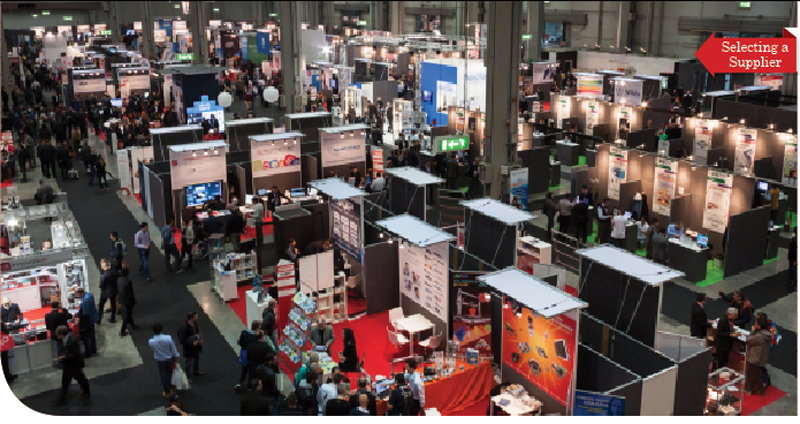
 |
There are many types of suppliers of merchandise for retailers such as wholesale distributors, importers, and manufacturers. Trade shows can also be a good source of information on merchandise suppliers. These events give you the opportunity to meet multiple suppliers and view products at one venue. Making the right decision on who you select as suppliers can be time consuming. Take you time and do your research.
 |
Before you select products for your new store, you may want to visit local competitors to get an idea of what products and pricing strategies they are currently utilizing. By doing this, you will be able to make note of what type of products, brand names, and quantities they carry. You will also be able to determine what products are on sale, clearance, or otherwise discounted. If you are able to travel outside of the local region, you may be able to find a retailer who is willing to share this information with you.

Store layout and design is one of the more critical factors for small retailers. Every square foot of retail space counts! Are you maximizing the use of your floor space? This section will provide insight into some of the basic elements and principles of effective store layout and design.
 |
The check out station is typically the first element of store design. Traditionally, this station is placed near the front of the store so that you have a line of sight with the front door and can monitor customers as they enter or leave.
 |
Determine if you will need a back storage room for overstock, display storage, and supplies. If you are renting space that has empty interior walls without seperate storage space, you may need to have a contractor build a back room for your store.
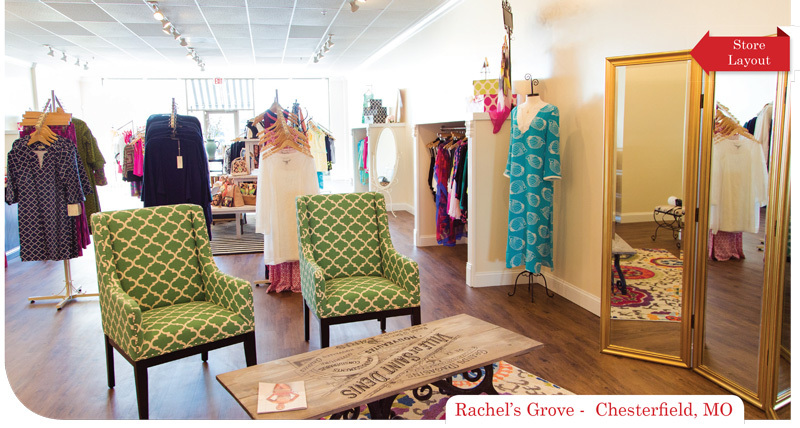


Does your store layout cater to your target audience? If you operate a children’s clothing store, make sure the aisles are wide enough to accommodate strollers.

Also, it is necessary to ensure that your store layout meets city fire regulations and ADA guidelines. This typically means that your aisles must be 36 to 42 inches wide. Your store may also be required to provide space behind your counters that allow for wheelchair accessibility. Be sure to check local regulations to ensure your store is ADA and OSHA compliant.

Your decision on store fixtures and displays will define the look and feel of your new store. If you determine that your store needs custom displays and fixtures, expect to pay more for that customization. Visit their online stores and request catalogs. If they have a local showroom, visit them in person to see product. Remember, your decision on store fixtures and displays will define the look and feel of your new store. Do you want your store to look more modern or is a traditional feel better suited? Consider visiting other stores in your area to get a feel for what type of store displays and fixtures they are utilizing. Walk through their store; do you like their layout?

|
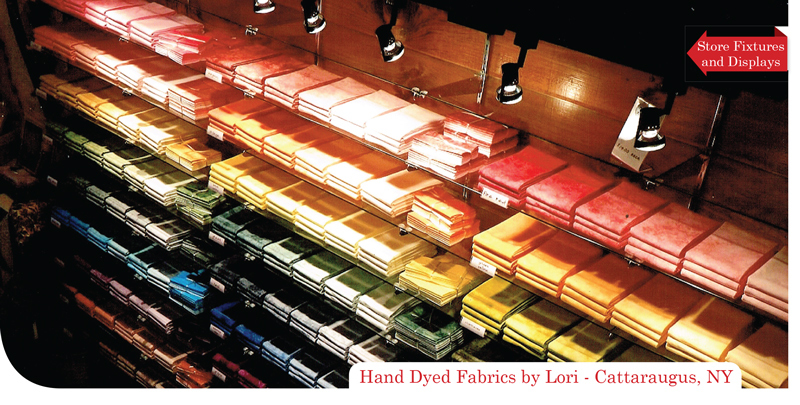
Deciding which fixtures should be part of your new store can be difficult. Take into account the following purchasing advice:
 |
Opaque shelving can hide the merchandise in large displays. Consider using glass shelving so that customers can view all of your merchandise. Also, display merchandise at eye level.
 |
Ensure the size of the displays and fixtures purchased will not create narrow aisles.
 |
When opening a new store you will probably need to purchase multiple store fixtures and displays. Make sure the pieces you purchase match. How a product is presented is a vital part in determining if it will be purchased.


Make sure you keep track of your sales and expenses on a daily basis. If your business incurs more expenses than sales, it will be difficult to stay in business for long. The first decision your retail business should make is determining how you plan to process sales at the checkout. Retail store owners must not only set up a credit card processing service, but also decide if their start up is better suited for an ECR (electronic cash register) or POS system (PC-based point of sale).

A point of sale system is a computerized system that enables businesses to track sales, inventory, merchandising, and employee labor. A typical point of sale system has the following components: a computer, a monitor (or touch screen), software, receipt printer, barcode scanner, and credit card terminal.



Most small retail stores with revenues of under $400,000 should consider using a less expensive solution like an ECR (electronic cash register). If the sales of your business are above $400,000 your business can gain considerable benefits from implementing a point of sale system. While the typical cash register will cost between $200 and $400, computerized point of sale systems tend to be more expensive. The cost of a point of sale system can vary significantly depending on the hardware/software configuration chosen. The typical cost for a point of sale system is $2,000 to $4,000 per system, which includes hardware, software, training, and after-sale support.
 |
When selecting a POS system, make sure the system you are purchasing integrates into your back end accounting package. Most POS software is designed with interfaces to popular small business accounting packages like QuickBooks or Peachtree. Your POS software package should also have an integration path so that it works seamlessly with your merchant services account. This allows you to quickly and efficiently process credit card transactions.

|
|
